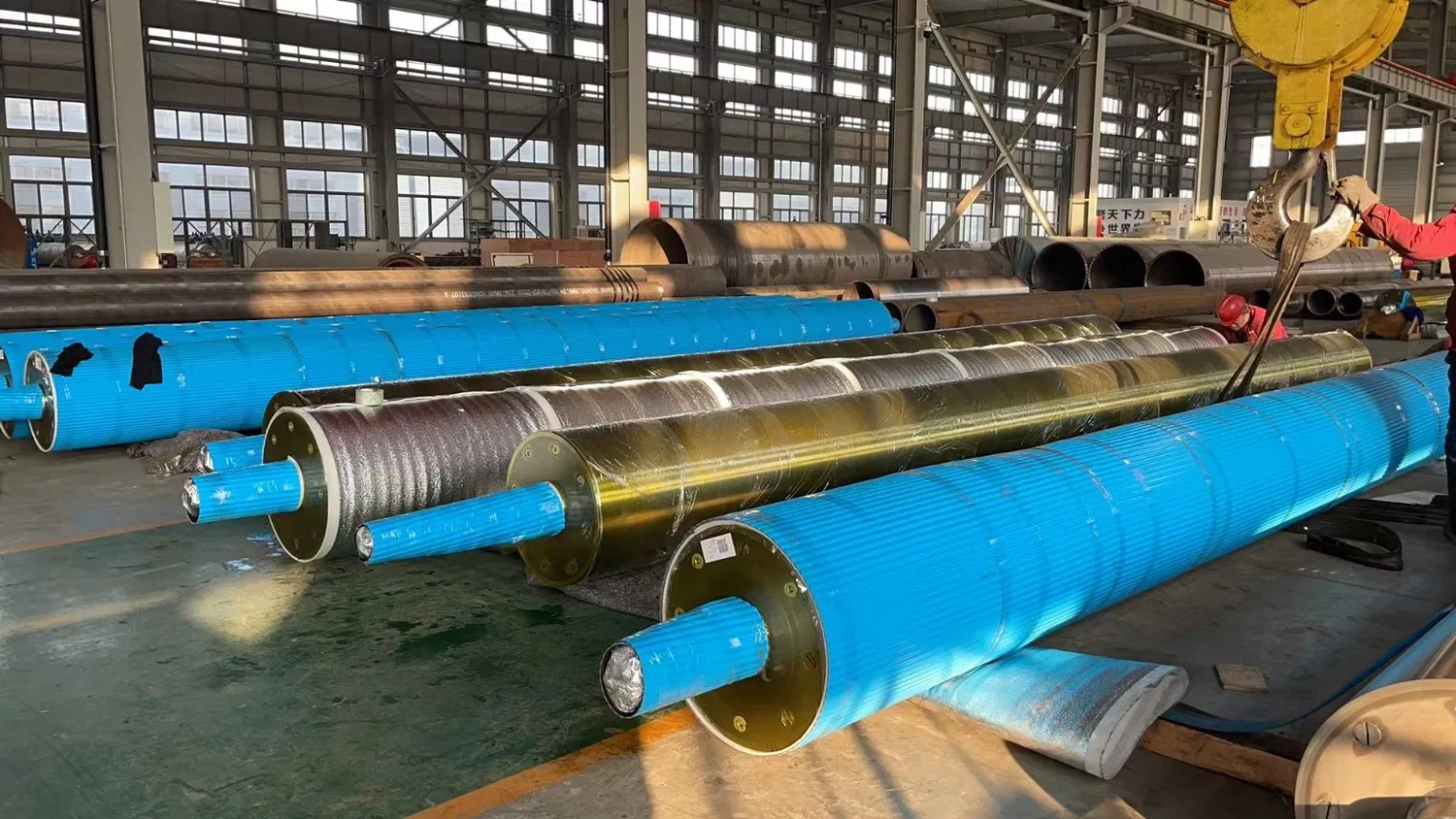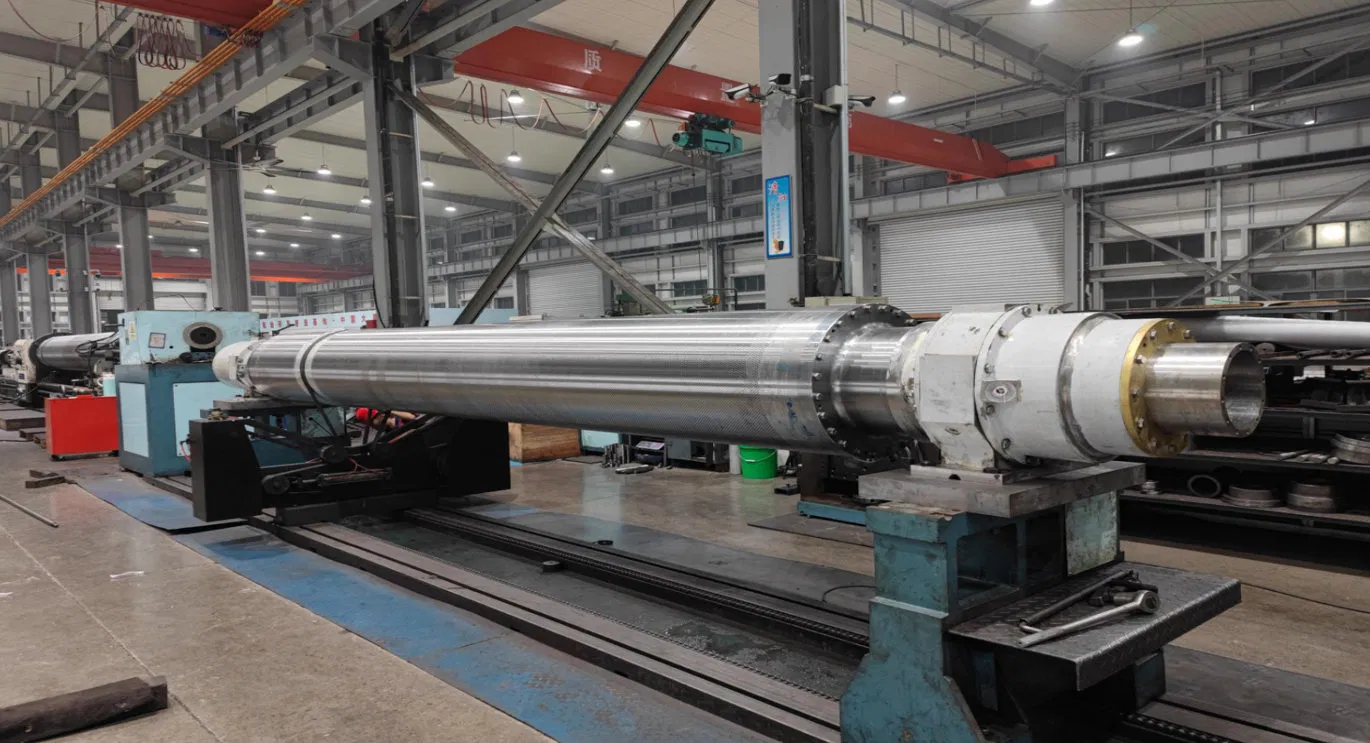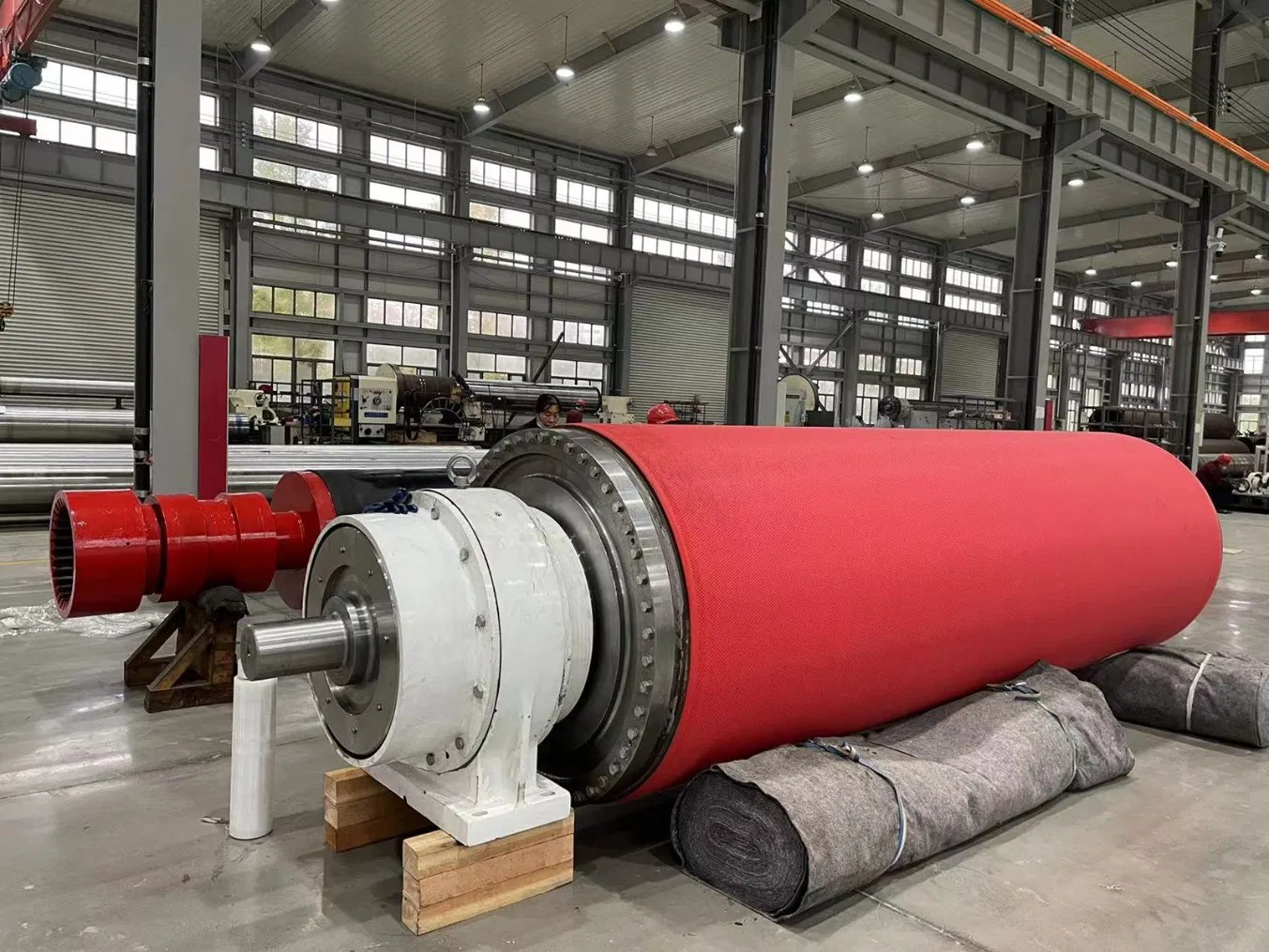Have you ever considered the sheer engineering marvel behind a simple sheet of paper? From the moment raw pulp enters a paper machine until it emerges as a finished product, a complex dance of precision machinery is at play. At the heart of this intricate process are the unsung heroes: Paper mill rolls. These aren't just any rollers; they are highly engineered components, each designed with specific functions to transform a watery slurry into a strong, smooth, and usable sheet of paper. Frankly speaking, without their precision, durability, and specialized designs, modern paper production as we know it would be impossible.
To be honest, the world of paper manufacturing is far more complex than most people imagine, and the role of these rolls is absolutely critical. They are instrumental in dewatering, pressing, drying, and finishing the paper web, operating under extreme conditions of heat, pressure, and speed. Their performance directly impacts the quality, efficiency, and cost-effectiveness of the entire paper-making operation. Understanding their function, construction, and maintenance is key to appreciating the backbone of one of the world's oldest and most essential industries.
A Deep Dive into the Diverse World of Paper Machine Rolls
The journey of paper from pulp to product is a multi-stage process, and each stage demands a specific type of roll, meticulously designed for its unique task. These paper machine rolls are the workhorses, guiding, pressing, and drying the paper web at various points along the production line. Their diversity is fascinating, reflecting the specialized requirements of each section of a paper machine.
Forming Section Rolls
This is where the paper web truly begins to form. In the forming section, the pulp slurry, which is mostly water, is laid onto a moving mesh screen. Rolls in this section are primarily responsible for initial dewatering and supporting the forming fabric.
- Breast Rolls: Located at the very beginning, these rolls support the forming fabric as the pulp slurry is introduced. They are often large and designed for stability.
- Couch Rolls: Positioned at the end of the forming section, couch rolls are crucial for the initial removal of water through vacuum. They help consolidate the nascent paper web before it moves to the press section.
- Wire Rolls: These are supporting rolls that guide and tension the forming fabric, ensuring a smooth and consistent surface for water drainage.
The primary function here is to create a uniform sheet, and the rolls ensure the fabric tension and water removal are precisely controlled. Key function: Initial water removal and sheet consolidation.
Press Section Rolls
After the forming section, the paper web still contains a significant amount of water. The press section is where mechanical dewatering occurs, significantly reducing the water content through immense pressure. This is a critical stage for energy efficiency, as removing water mechanically is far less energy-intensive than drying it with heat.
- Press Rolls (Plain, Grooved, Blind-Drilled): These rolls work in pairs, creating a "nip" through which the paper web passes. The pressure exerted squeezes water out of the web. Grooved and blind-drilled rolls feature patterns on their surface to facilitate water drainage away from the nip, preventing rewetting.
- Suction Rolls: Often integrated into the press section, these rolls have a perforated shell and an internal vacuum system to actively draw water out of the paper web, further enhancing dewatering efficiency.
The surfaces of these rolls are often covered with specialized rubber or composite materials to provide the right grip and release characteristics, while also withstanding the immense pressures involved.

Dryer Section Rolls
Once mechanically dewatered, the paper web enters the dryer section, where residual moisture is removed through evaporation. This section typically consists of a large number of steam-heated dryer cylinders.
- Dryer Cylinder Rolls: These are large, hollow, steam-heated cast iron cylinders. The paper web wraps around them, and the heat transfers to the paper, evaporating the remaining water.
- Guide Rolls: These rolls ensure the paper web maintains proper tension and alignment as it passes over and under the dryer cylinders, preventing wrinkles or breaks.
Temperature control and uniform heat transfer are paramount in this section to prevent uneven drying, which can lead to paper defects.
Calender and Reel Section Rolls
The final stages of paper making involve finishing the surface and winding the paper into large rolls.
- Calender Rolls: These rolls are used to improve the smoothness, gloss, and thickness uniformity of the paper. They can be hard-nip (metal on metal) or soft-nip (metal on a softer composite roll). Passing the paper through a series of nips under controlled pressure and temperature imparts the desired surface characteristics.
- Reel Spools/Reel Drum: At the very end of the machine, the finished paper is wound onto large spools or a reel drum to create jumbo rolls, which are then further processed into smaller consumer-sized rolls.
Frankly speaking, each type of paper machine rolls plays an indispensable role, meticulously crafted to perform its specific function under demanding conditions, ultimately contributing to the final quality and characteristics of the paper.
Engineering Excellence: Materials, Manufacturing, and Coating of Paper Mill Rolls
The performance and longevity of paper mill rolls are not just a matter of design; they are deeply rooted in the materials chosen, the precision of their manufacturing, and the advanced coatings applied to their surfaces. These components operate in harsh environments – high temperatures, immense pressures, corrosive chemicals, and constant abrasion – making material selection and surface engineering paramount.
Core Materials and Construction
The core of a paper mill roll is typically made from robust materials like cast iron, steel, or even composite materials for specialized applications. The choice depends on the roll's function, the stresses it will endure, and its thermal requirements.
- Cast Iron: Often used for dryer cylinders due to its excellent thermal conductivity and ability to withstand high temperatures. Its inherent damping properties also help reduce vibration.
- Steel: Preferred for press rolls, calender rolls, and other high-stress applications due to its superior strength, stiffness, and machinability.
- Composite Materials: Increasingly used for their lightweight properties, corrosion resistance, and specific damping characteristics. These can reduce energy consumption and improve runnability in certain sections.
Many rolls are hollow, allowing for the circulation of heating or cooling fluids (like steam or chilled water) to maintain precise temperature control, which is crucial for paper quality and machine stability. The internal structure also houses robust bearings and sealing systems, vital for smooth, continuous operation.
Surface Coatings and Finishes
While the core provides structural integrity, it's often the surface coating that dictates a roll's performance and lifespan. These coatings are engineered to provide specific properties:
- Rubber Covers: Widely used on press rolls and some guide rolls. They offer elasticity for uniform nip pressure, excellent release properties to prevent paper sticking, and resistance to chemicals and abrasion. Different rubber compounds are formulated for varying hardness, temperature resistance, and chemical compatibility.
- Ceramic Coatings: Applied for extreme wear resistance, high hardness, and excellent release properties, especially in demanding applications like suction rolls or some calender rolls. They offer superior durability against abrasive fillers in the paper furnish.
- Polymer Coatings: Modern polymer composites offer a balance of wear resistance, release, and chemical inertness, often tailored for specific paper grades or machine sections.
- Metallic Coatings: Hard chrome plating, for instance, is used for its hardness and corrosion resistance on certain calender or guide rolls.
In my experience, the right coating can make all the difference in roll performance, extending service intervals and improving paper quality. Enhancing performance and extending lifespan is a constant goal in roll technology.
Precision Manufacturing
The manufacturing of these rolls is an art and a science. They must be machined to incredibly tight tolerances, often measured in microns, to ensure perfect cylindricality, balance, and surface finish. Any deviation can lead to vibrations, uneven nip pressures, and ultimately, defects in the paper or even catastrophic roll failure.
- Grinding: Rolls are precisely ground to achieve the desired diameter and surface finish.
- Crowning: Many rolls are "crowned," meaning they are ground with a slightly larger diameter in the middle than at the ends. This compensates for deflection under load, ensuring a uniform nip pressure across the entire width of the paper web.
- Balancing: Dynamic balancing is crucial, especially for rolls operating at high speeds, to prevent vibrations that can damage bearings, affect paper quality, and even compromise machine safety.
The combination of advanced materials, specialized coatings, and ultra-precision manufacturing techniques ensures that paper mill rolls can withstand the rigors of continuous operation and deliver consistent, high-quality paper.
The Lifeline of Production: Maintenance and Optimization of Paper Mill Rolls
Given their critical role and the harsh conditions they endure, paper mill rolls are high-wear components that require meticulous and proactive maintenance. Neglecting roll maintenance can lead to significant downtime, reduced paper quality, increased energy consumption, and ultimately, substantial financial losses. It's worth noting that a well-executed maintenance strategy is not just about fixing problems; it's about optimizing performance and extending the operational life of these valuable assets.
Regular Inspection and Monitoring
The first line of defense in roll maintenance is vigilant inspection. This includes:
- Visual Checks: Looking for signs of wear, cracks, pitting, or coating damage during routine shutdowns.
- Vibration Analysis: Monitoring vibration levels can indicate bearing issues, imbalance, or surface irregularities before they become critical failures.
- Temperature Monitoring: Infrared cameras or embedded sensors can detect hot spots, signaling bearing problems or uneven heating in dryer rolls.
- Nip Impression Tests: Using pressure-sensitive paper to assess the uniformity of the nip impression, crucial for press and calender rolls.
Many experts agree that consistent monitoring, often leveraging predictive maintenance technologies, allows mills to schedule interventions proactively, minimizing unplanned downtime.
Grinding and Re-crowning
Over time, the surfaces of rolls can wear unevenly, lose their precise profile, or develop imperfections. To restore their optimal performance, rolls are periodically removed from the machine and sent to a specialized grinding shop.
- Surface Grinding: Removes a thin layer of material to restore the desired smoothness and concentricity.
- Re-crowning: Re-establishes the precise crown profile that compensates for roll deflection under load, ensuring uniform pressure across the paper web. This is particularly vital for press and calender rolls.
The frequency of grinding depends on the roll type, operating conditions, and paper grade. Proper grinding is paramount for maintaining consistent paper quality and preventing issues like uneven moisture profiles or caliper variations.
Bearing Maintenance
Roll bearings are subjected to immense loads, high speeds, and often elevated temperatures. They are critical for the smooth rotation of the rolls and preventing excessive friction.
- Lubrication: Regular and proper lubrication is essential to minimize friction and wear.
- Replacement: Bearings have a finite lifespan and must be replaced before they fail, which can cause severe damage to the roll and machine.
- Alignment: Proper alignment of bearings and rolls is crucial to prevent premature wear and vibration.
Neglecting bearing maintenance is a common cause of unexpected downtime and costly repairs.
Cleaning and Storage
Proper cleaning prevents buildup of paper fibers, chemicals, and contaminants that can affect roll performance and paper quality. Rolls removed from the machine for maintenance or storage also require specific care.
- Cleaning Methods: Depending on the roll and coating, methods range from high-pressure water jets to chemical cleaning or specialized laser cleaning.
- Storage Conditions: Rolls should be stored in a clean, dry environment, preferably in climate-controlled conditions, to prevent corrosion, surface damage, and deformation. They should be properly supported to prevent sagging.

The cost of a single paper mill roll can be substantial, and the cost of machine downtime due to roll failure is even higher. Therefore, investing in robust roll maintenance in paper mills and optimization strategies is not an option but a necessity for sustainable and profitable paper production.
The Horizon of Innovation: Future Trends in Paper Mill Roll Technology
The paper industry, while mature, is far from stagnant, and the technology behind paper mill rolls continues to evolve. Driven by demands for higher efficiency, improved paper quality, reduced energy consumption, and enhanced sustainability, innovations are constantly emerging. Interestingly enough, the evolution of optimizing paper production rolls is moving towards greater intelligence and environmental responsibility.
Smart Rolls and IoT Integration
One of the most exciting developments is the integration of sensor technology and the Internet of Things (IoT) into paper mill rolls.
- Embedded Sensors: Rolls are being designed with internal sensors that can monitor critical parameters in real-time, such as temperature, vibration, pressure distribution across the nip, and even surface wear.
- Data Analytics: This real-time data is transmitted wirelessly to control systems, where advanced analytics can detect anomalies, predict potential failures, and optimize operational parameters. This shifts maintenance from reactive to truly predictive.
- Remote Monitoring: Mill operators can monitor the health and performance of their rolls from anywhere, enabling faster decision-making and proactive intervention.
This "smart roll" technology promises to significantly reduce unscheduled downtime, extend roll life, and optimize energy usage by ensuring rolls operate at peak efficiency.
Advanced Materials and Coatings
Research and development continue to push the boundaries of materials science for roll applications.
- Next-Generation Composites: Lighter, stronger, and more durable composite materials are being developed for roll shells, offering improved stiffness-to-weight ratios, better damping, and enhanced corrosion resistance.
- High-Performance Coatings: New ceramic, polymer, and hybrid coatings are being engineered to provide even greater wear resistance, superior release properties, and enhanced chemical inertness, leading to longer service intervals and reduced maintenance.
- Self-Healing Materials: While still in early stages for industrial rolls, the concept of coatings that can self-repair minor damage could revolutionize roll longevity.
These material advancements contribute directly to improved runnability, reduced energy consumption, and lower operational costs.
Energy Efficiency and Sustainability
With increasing pressure to reduce environmental footprints, future roll designs are also focusing on energy efficiency.
- Reduced Friction: Designing rolls with lower friction coefficients and improved bearing technologies minimizes the energy required to rotate them.
- Optimized Dewatering: Innovations in press roll designs and vacuum systems aim to remove more water mechanically, reducing the energy-intensive thermal drying load.
- Sustainable Manufacturing: Efforts are also being made to use more sustainable materials in roll manufacturing and to improve the recyclability of old rolls.
The future of paper mill rolls is bright, characterized by intelligence, durability, and a commitment to more sustainable paper production. What new breakthroughs do you think will revolutionize roll technology next?

Concluding Thoughts: The Enduring Legacy of Paper Mill Rolls
From the initial formation of the paper web to its final finishing and winding, Paper mill rolls are the silent, yet indispensable, architects of paper production. Their continuous evolution, driven by advancements in materials science, precision engineering, and smart technology, underscores their enduring importance to the industry. These aren't static components; they are dynamic, high-performance machines within a machine, constantly being refined to meet the ever-growing demands for efficiency, quality, and sustainability.
The next time you pick up a book, write a note, or even use a paper towel, take a moment to appreciate the complex interplay of forces and the ingenious engineering embodied in the Paper mill rolls that made it all possible. They truly are the unsung heroes, ensuring the smooth, continuous flow of paper from forest to consumer.
For more detailed information, please visit our official website:Paper mill rolls
About the author: Dr. Alistair Finch is a veteran industrial engineer with over two decades of experience specializing in heavy machinery and process optimization within the pulp and paper sector. His expertise spans materials science, predictive maintenance, and the design of high-performance industrial components. Dr. Finch is passionate about sharing insights into the intricate world of manufacturing, particularly the critical role of precision engineering in driving efficiency and sustainability.


